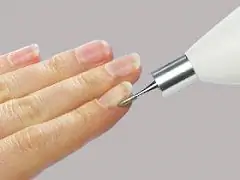Siphon enema
A siphon enema is usually performed in a hospital.

It is used in the absence of the effect of cleansing, laxative enemas and laxatives. Such an enema should be prescribed by the attending physician after a thorough examination and questioning of the patient. It is especially important to do a siphon enema according to the algorithm, since this procedure can lead to complications in case of violations of the staging technique.
Indications and contraindications for this enema
The indication for staging a siphon enema is the removal of poisons and toxic substances that have entered the body through the mouth. Also, such an enema is used to diagnose intestinal obstruction in some cases. Sometimes a siphon enema is given to patients before bowel surgery. In addition, such a procedure effectively removes all the products of decay and fermentation from the large intestine. Contraindications for a siphon enema are considered acute inflammation in the anal area, bleeding hemorrhoids, rectal tumors, acute colitis, bleeding from the wall of the stomach or intestines, the first days after bowel surgery.
Siphon enema technique
Doctors and nurses have been trained to perform the siphon enema. Even if a nurse will perform the setting of a siphon enema, the doctor will have to be present during the procedure. The device for this enema consists of a special glass funnel with a capacity of 1-2 liters and a tube system. How much water is required for an enema becomes clear only during the procedure. For adults, 10-12 liters of clean warm water are harvested. Its temperature should correspond to body temperature, that is, 35-36 degrees. It is unacceptable to use hotter water. The siphon enema technique implies the obligatory correct positioning of the patient. The patient lies on the edge of the couch on his left side, slightly bending his knees. The end of one of the tubes is lubricated with vaseline oil and inserted into the anus to a depth of 20-30 cm. The funnel is kept in an inclined position,slightly above the patient's body at his buttocks. It is filled with water and lifted up to a height of about 1 meter from the patient's buttocks. When the level of decreasing water reaches the top of the funnel cone, it is lowered down without turning it over, and they are waiting for it to be filled with intestinal contents. The dirty water must be drained, and the siphon enema must be continued. Bowel lavage is continued until clean water appears. Further, the outer end of the tube is placed in a basin for 10-20 minutes to drain the remaining water and gas. Bowel lavage is continued until clean water appears. Further, the outer end of the tube is placed in a basin for 10-20 minutes to drain the remaining water and gas. Bowel lavage is continued until clean water appears. Further, the outer end of the tube is placed in a basin for 10-20 minutes to drain the remaining water and gas.
Important points in the technique of setting a siphon enema
This procedure is rather unpleasant for the patient. The psychological aspect of the patient's preparation is especially important. In advance, you need to talk to him about the upcoming siphon enema, establish a trusting and confidential relationship.

To avoid psychological stress, it is important to carefully isolate the room for such an enema. Despite the fact that there is never sterility in the intestines, a siphon enema should be performed according to all the rules of asepsis and antiseptics. Today this procedure is positioned in some paid health centers as a preventive one. It is recommended for a whole range of diseases and even just to rid the body of toxins. Of course, such use of siphon enemas is not recommended by conventional medicine. The most frequent and not the most dangerous complications of such uncontrolled use of enemas can be dysbiosis, impaired intestinal motor function, and constipation.
What is needed for setting an enema
Before you start staging a siphon enema, you need to make sure that you have everything you need. You need gloves, a gown, an apron for a medical worker, a sterile bix with a system for a siphon enema, napkins, an oilcloth, a diaper, a basin or bucket for rinsing water, disinfectant solutions for treating an instrument table.
Found a mistake in the text? Select it and press Ctrl + Enter.







